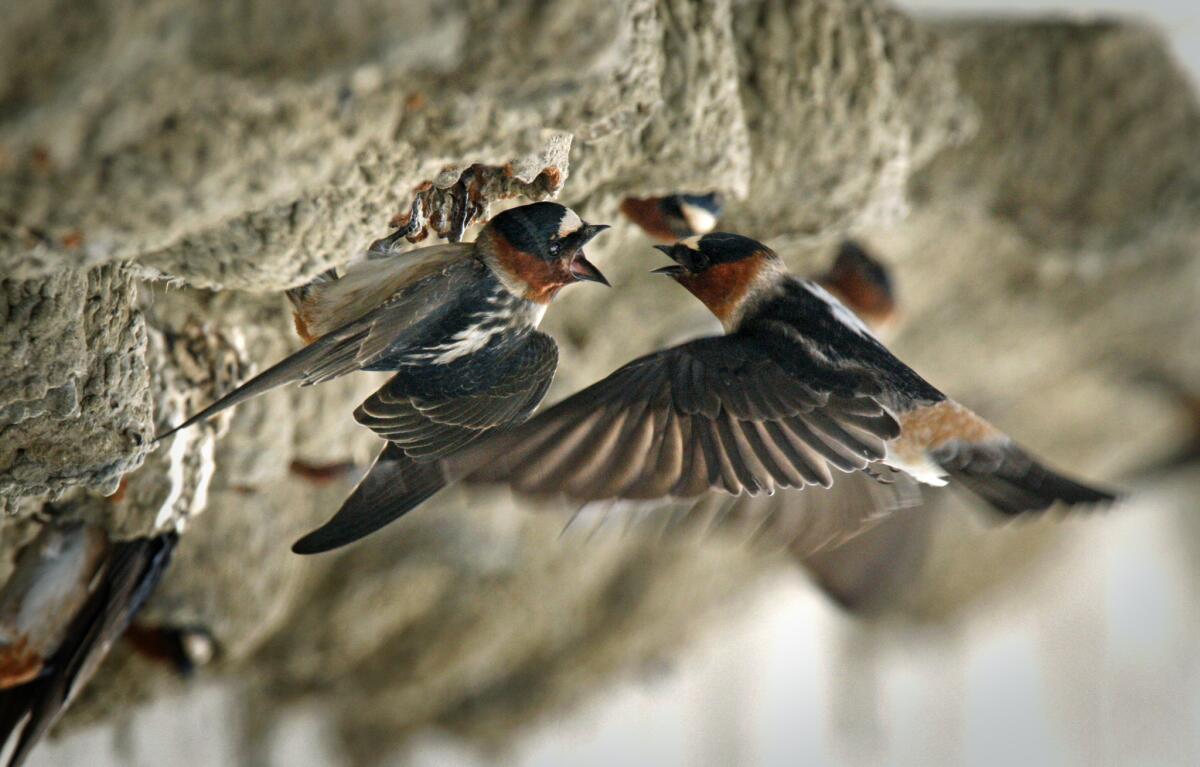Shorter wings may help highway-dwelling cliff swallows avoid cars

If you’re a bird that likes to build mud nests in dangerous places, such as highway bridges and overpasses, how do you avoid fatal encounters with cars and trucks?
You quickly get out of their way. And it helps if you have shorter wings, which allow for a more vertical takeoff.
A paper published March 18 in the journal Current Biology suggests that the wingspan of cliff swallows in a Nebraska study has shortened as an evolutionary response to the hazards of highway dwelling.
The number of road-killed swallows dropped sharply over a 30-year period at the same time as the average wing length in the swallow population showed a long-term decline, according to the research.
“Evolution is an ongoing process,” said the paper’s coauthor, Charles R. Brown of the University of Tulsa Department of Biological Science. Roads and vehicles, he added, “exert selection pressures in a way we don’t usually think about.”
Brown and his colleagues, who regularly monitored the colonies as part of ongoing studies, found that birds that wound up dead on the pavement had longer wings than the population as a whole.
Other factors may be influencing wingspan, such as changes in insect prey, the authors said. Swallows, which exhibit social learning, could also have learned how to avoid vehicles.
But the research showed the mortality drop was not a result of changes in traffic volume or the swallow population, which increased during the 1983-2012 study period.






